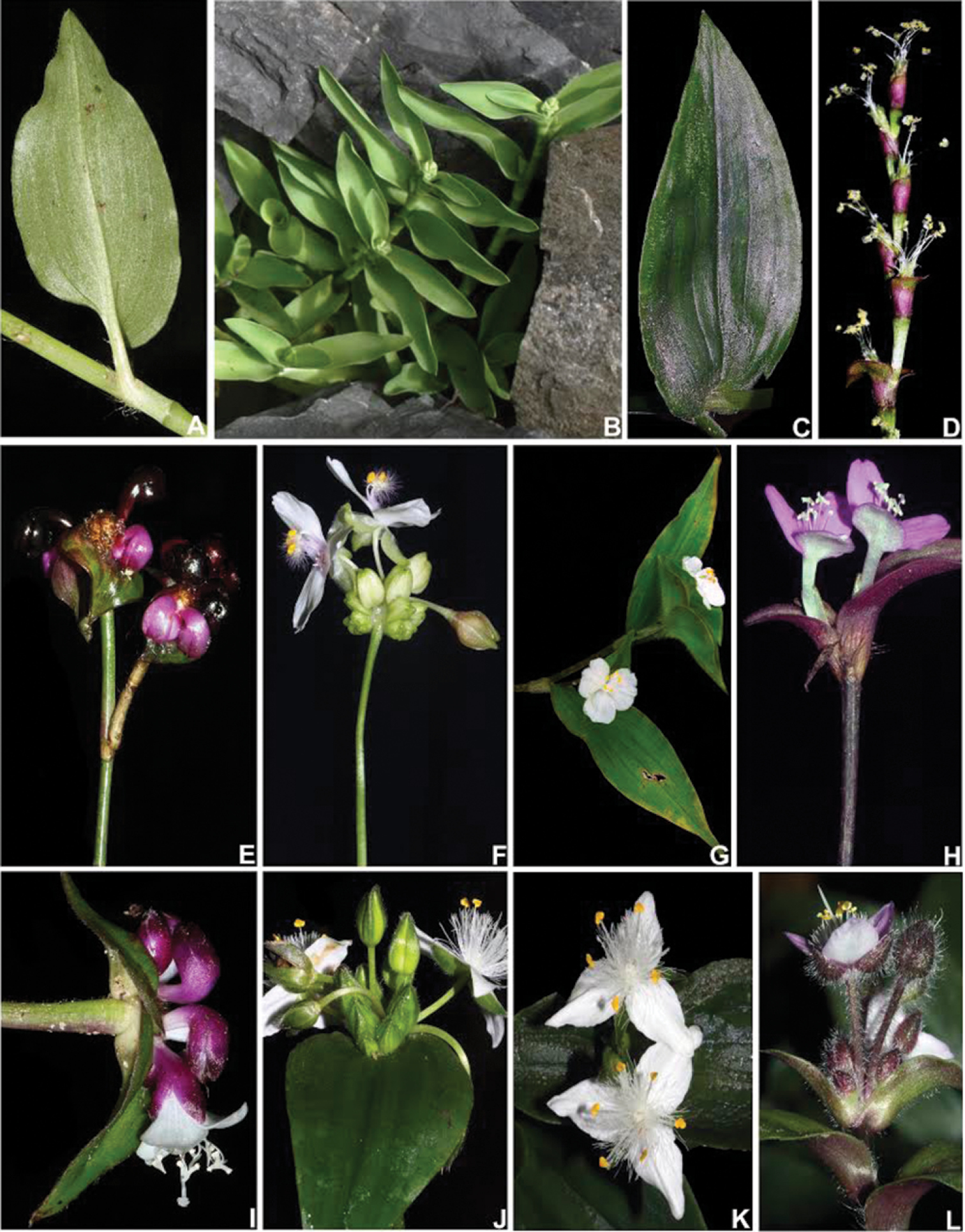
|
||
|
Some macromorphological characters used in the phylogenetic analysis. A subpetiolate leaf (Character 8) and asymmetrical base (Character 16), in Tradescantia tenella Kunth B complicate leaves (Character 8), in Tradescantia crassula Link & Otto. C impressed secondary veins (Character 19), in Tradescantia fluminensis Vell D predominantly axillar to thyrse-like synflorescence (Character 24), in Callisia repens (Jacq.) L. E synflorescence with two paraclades (Character 26), in Tradescantia zanonia (L.) Sw. F contracted cincinni (Character 34), fused back to back (Character 35), vestigial cincinni bracts (Character 38), flower display of 60° (Character 48), shorter antesepalous stamens (Character 72), sigmoid filaments (Character 73), and zygomorphic androecium (Character 76), in Tripogandra diuretica (Mart.) Handlos G supernumerary cincinni bracts (Character 37), in Tradescantia praetermissa M.Pell H cincinni bracts saccate at base (Character 43), tubular flower (Character 47), fused petals (Character 60), clawed petals (Character 62), shorter antesepalous stamens (Character 72), connective expanded and transversally linear (Characters 77–80), round anther sacs (Characters 81–82), pollen white in vivo (Character 83), and trilobate stigma (Character 91), in Tradescantia zebrina Heynh. ex Bosse. I tubular flower (Character 47), pedicels geniculate at anthesis and pre-anthesis (Character 51), fused sepals (Character 53), filaments bearded with sparse and short hairs at mid-length (Characters 66–71), shorter antesepalous stamens (Character 72), connective expanded and transversally linear (Characters 77–80), round anther sacs (Characters 81–82), pollen white in vivo (Character 83), and trilobate stigma (Character 91), in T. zanonia J sepals all keeled (Character 56), in T. fluminensis K filaments basally bearded with dense and long hairs (Characters 66–71), connective expanded and rhomboid (Characters 77–80), anther sacs ellipsoid (Characters 81–82), and pollen yellow in vivo (Character 83), in T. fluminensis L pistil longer than the androecium (Character 86) and punctate (Character 91), in Tradescantia cerinthoides Kunth. All photos by M.O.O. Pellegrini, except G by H. Huaylla. |